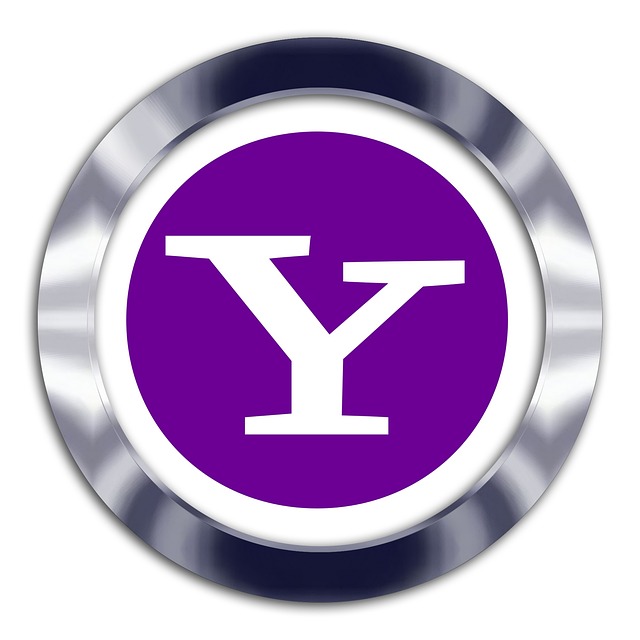Server-Side SEO Optimization is a critical component of Technical SEO Training, focusing on enhancing search engine visibility through server and website structure improvements. It involves optimizing page load speeds, refining database queries, and configuring servers for better user experience. Key practices include managing sitemaps, robots.txt files, redirect chains, structured data markup (for improved crawlability and rich snippets), and security measures like HTTPS encryption. Regular audits, monitoring using search engine tools, and continuous optimization are essential to maintain high rankings and drive organic traffic. Technical SEO Training equips professionals to collaborate on these areas, ensuring efficient crawling and indexing by search engines, faster page load times, and ultimately higher search rankings.
In today’s digital landscape, Server-Side SEO Optimization is an indispensable aspect of successful online visibility. This comprehensive guide delves into the intricacies of enhancing search rankings through robust server infrastructure. From understanding the fundamentals to exploring technical depths, we cover crucial topics like fast loading pages, optimized server performance, efficient indexing, structured data markup, and security considerations. Equip yourself with this essential Technical SEO Training to master strategies that drive better search engine results.
Understanding Server-Side SEO Optimization: The Basics

Server-Side SEO Optimization is a crucial aspect of Technical SEO Training, focusing on improving search engine visibility by enhancing the server and website structure. It involves optimizing components that are beyond the control of the website owner but significantly impact how search engines crawl and index web pages. By understanding these fundamentals, businesses can ensure their websites are efficiently processed by search engine algorithms, leading to better rankings and increased organic traffic.
At its core, Server-Side SEO Optimization includes tasks such as ensuring fast page load times, implementing efficient database queries, and setting up correct server configurations. These practices directly influence the user experience, encouraging longer visits and lower bounce rates, which are favorable signals for search engines. Additionally, it involves managing sitemaps, robots.txt files, and redirect chains to guide search engine crawlers effectively, ensuring they can access and index all important pages.
Technical Aspects of Server-Side SEO: A Deep Dive

The technical aspects of Server-Side SEO involve optimizing key components behind the scenes, ensuring search engines can efficiently crawl and index web content. This includes implementing structured data markup to provide additional context about your pages, improving site architecture by establishing a clear hierarchy with XML sitemaps, and enhancing server performance through caching mechanisms to reduce load times. A robust Technical SEO Training program should cover these fundamentals, empowering developers and digital marketers to collaborate effectively in optimizing website infrastructure.
Delving deeper, Server-Side SEO also demands attention to security measures like HTTPS encryption, which not only safeguards user data but also signals search engines of your site’s legitimacy. Additionally, addressing crawl errors, canonization issues, and mobile-friendliness are crucial. Regular audits using tools offered by search engines themselves can identify problem areas, while continuous monitoring ensures that your website remains optimized as it evolves over time.
Importance of Fast Loading Pages in SEO Strategy

In today’s digital landscape, where users expect instant gratification, fast-loading pages are a critical component of any successful SEO strategy. Search engines, like Google, have explicitly stated that page speed is a ranking factor, meaning sites with quicker loading times will be favored in search results. This is because slow websites can significantly impact user experience, leading to high bounce rates and reduced time on page, which are negative signals for search engines. Optimizing your site’s speed through Technical SEO Training ensures your pages deliver the content efficiently while providing a seamless browsing experience.
By implementing best practices such as minimizing HTTP requests, leveraging browser caching, optimizing images, and using content delivery networks (CDNs), you can substantially improve page load times. These techniques not only enhance SEO but also contribute to better overall website performance, ensuring your site remains competitive in the ever-evolving online environment.
Optimizing Server Performance for Better Search Rankings

Optimizing server performance is a crucial aspect of Server-Side SEO, directly impacting search engine rankings. By improving server speed and efficiency, websites can enhance user experience, a key factor in Technical SEO Training. Efficient coding practices, optimized database queries, and content delivery network (CDN) implementation are essential techniques to reduce page load times. These strategies not only benefit search engines but also ensure your site delivers fast, responsive experiences to visitors, encouraging longer stays and lower bounce rates.
Search engines, particularly Google, have made it clear that website speed is a ranking signal. A well-optimized server ensures pages load quickly, signaling to search algorithms that the site is technically sound and user-friendly. This can lead to higher search rankings, increased organic traffic, and better overall performance, making server-side optimization a vital component of any comprehensive SEO strategy.
Efficient Indexing and Crawling: Role of Servers

Efficient indexing and crawling are vital components of Server-Side SEO Optimization, where the role of servers is indispensable. Servers play a crucial part in ensuring search engine crawlers can access and index web pages promptly and effectively. By implementing optimized server configurations, websites can enhance their visibility and performance on search engine results pages (SERPs). This includes utilizing caching mechanisms to speed up page loading times, which directly impacts user experience and SEO rankings.
In the realm of Technical SEO Training, understanding how servers handle indexing is essential. Efficient crawling allows search engines to discover and understand website content better, leading to improved site architecture and sitemap generation. Servers can be configured to provide direct access to static assets, such as images and CSS files, enabling crawlers to index them accurately. This meticulous attention to server optimization ensures that websites are not only discovered but also ranked higher for relevant search queries.
Implementing Structured Data Markup on the Server End

Implementing Structured Data Markup on the server end is a powerful step in enhancing your website’s visibility and performance, as recommended by experts in Technical SEO Training. This process involves adding specific code snippets to your server configuration, enabling search engines to better understand and interpret the content of your pages. By doing so, you provide valuable context that can lead to improved rich snippet displays in search results, attracting more users’ attention.
Structured Data Markup allows you to label different elements on your web pages, such as reviews, events, products, or recipes, providing search engines with precise data about the content they index. This precision is crucial for Search Engine Optimization (SEO), ensuring that your website appears in relevant searches and stands out from competitors. It’s a technical aspect of SEO that requires attention to detail and a solid understanding of web development practices.
Security Considerations in Server-Side SEO Practices

In the realm of Server-Side SEO Optimization, security is a cornerstone that often gets overlooked amidst the excitement of enhancing search visibility. As businesses implement complex algorithms and data-intensive processes on their servers, they must ensure their SEO practices don’t inadvertently introduce vulnerabilities. A robust Technical SEO Training program should cover these aspects, educating professionals about potential risks such as data breaches, malicious code injection, and unauthorized access, which can have severe consequences for both the website’s performance in search results and user privacy.
Addressing security considerations means employing encryption protocols to safeguard sensitive data exchanged between servers and users, regularly updating software patches to mitigate known vulnerabilities, and implementing robust access controls to restrict unauthorized personnel from accessing critical server components. By integrating these measures into Server-Side SEO strategies, businesses can ensure their optimization efforts remain effective while protecting against evolving cyber threats, ultimately fostering a secure digital environment for both operations and visitors.
Best Practices and Tools for Continuous Optimization

To ensure continuous optimization in Server-Side SEO, implement best practices that include leveraging structured data markup to enhance search engine understanding and improve click-through rates. Regularly update server-side scripts to reflect changes in content or website structure, ensuring dynamic pages are crawled effectively. Utilize Technical SEO Training to familiarize yourself with tools like Google Search Console, which provides insights into crawl errors, indexing issues, and site performance.
Automate where possible with specialized SEO tools that offer real-time monitoring of server response times, helping to maintain fast page loads critical for user experience and search engine rankings. Regularly audit website metadata, headers, and redirects to ensure accuracy and efficiency. Continuously monitor competitor strategies using industry benchmarks to stay ahead in the ever-evolving SEO landscape.
